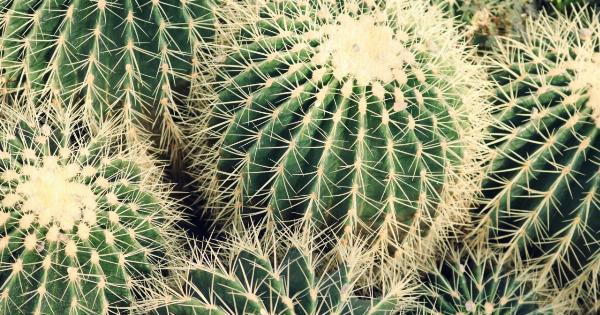Thorns are a common hindrance when it comes to enjoying the beauty of plants and flowers. Whether you are working in the garden or simply trying to arrange a bouquet, dealing with thorns can be painful and frustrating.
However, with the right techniques and tools, removing thorns can be a breeze. In this step-by-step guide, we will take you through the process of removing thorns safely and efficiently.
Step 1: Gather Your Tools
Before you begin the process of removing thorns, it is essential to gather the necessary tools. Here are the items you will need:.
- Gardening gloves
- Pruning shears
- Tweezers
- Disinfectant
- Rubbing alcohol
- Antiseptic cream
Step 2: Protect Your Hands
Thorns can be sharp and potentially cause injuries. To protect your hands while removing thorns, wear a pair of sturdy gardening gloves.
The gloves should be thick enough to prevent thorn pricks but still allow you to have dexterity and control over your movements.
Step 3: Locate the Thorns
Once you have your gloves on, carefully inspect the plant or flower to locate the thorns. Thorns can be found on stems, leaves, or even flower buds. Look for any protrusions that appear sharp and pointy.
Step 4: Trim the Stems
If the thorns are located on the stems, use pruning shears to trim them. Start by cutting off any excess stems that have thorns on them. Make sure to cut at a 45-degree angle to encourage healthy growth.
Dispose of the trimmed stems properly to avoid any accidents.
Step 5: Remove Thorns from Leaves
If the thorns are present on the leaves, carefully hold the leaf with one hand and use a pair of tweezers with the other hand to grip the thorn. Gently pull the thorn out in the opposite direction of the leaf’s growth.
Be cautious not to damage the leaf or break the thorn, as it may cause further complications.
Step 6: Deal with Thorny Buds
Thorny buds can be particularly tricky to handle. In this case, wearing gloves and using tweezers can be helpful. Hold the bud firmly with one hand and use the tweezers to grasp the thorn as close to its base as possible.
Slowly and steadily pull the thorn out in the opposite direction of bud growth.
Step 7: Disinfect the Wounds
After removing the thorns, it is crucial to disinfect any wounds or punctures to prevent infections. Clean the affected area with a disinfectant solution or rubbing alcohol.
Make sure to follow the instructions on the packaging and avoid any contact with eyes or mouth. This step is vital, especially if you accidentally prick yourself while removing thorns.
Step 8: Apply Antiseptic Cream
To further ensure the wounds heal properly, apply a small amount of antiseptic cream. This will help reduce the risk of infection and promote faster healing. Gently massage the cream into the affected area until it is fully absorbed.
Step 9: Clean Your Tools
After completing the thorn removal process, it is essential to clean your tools thoroughly. Rinse the pruning shears with water to remove any plant residue and wipe them dry. Use disinfectant or rubbing alcohol to sanitize the tweezers.
Keeping your tools clean and in good condition will ensure their longevity and prevent the spread of any potential plant diseases.
Step 10: Dispose of Thorns Safely
Lastly, it is essential to dispose of the thorns properly. If you have pruned stems, bag them securely and dispose of them in a designated garden waste bin or a compost pile.
For individual thorns, place them in a covered container to avoid any accidental pricks and dispose of them along with your regular waste.
Conclusion
Removing thorns doesn’t have to be a daunting task. By following these ten steps, you can safely and efficiently remove thorns from plants and flowers.
Remember to protect your hands, gather the necessary tools, and be cautious while handling thorns. With a bit of patience and care, you can enjoy the beauty of your plants and flowers without the prickly interference of thorns.































